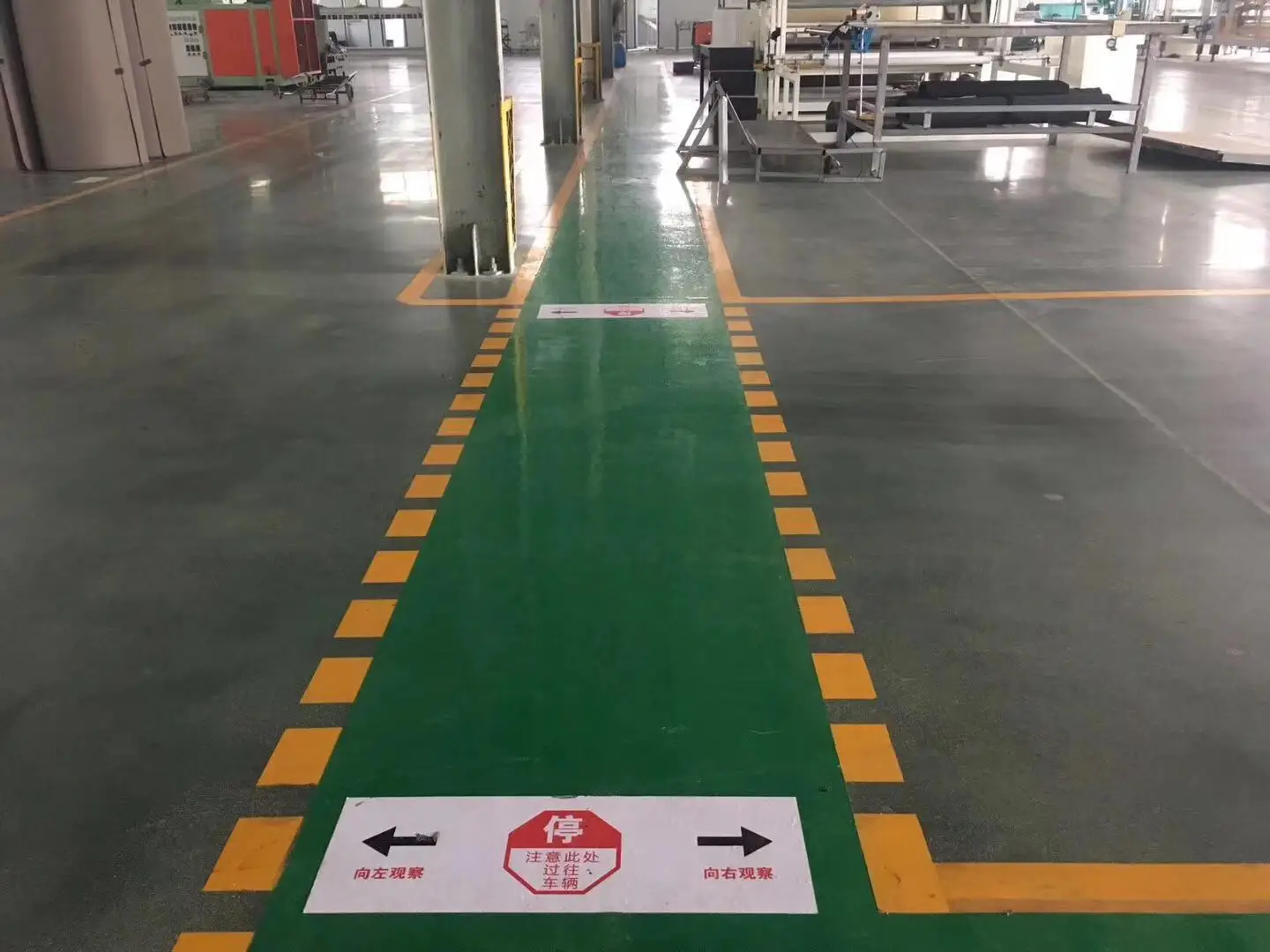
Have you ever wondered how certain spaces maintain a high level of safety and organization? The secret lies in effective safety line marking.
Safety line marking is a simple yet powerful tool used to create clear visual boundaries, guide pedestrian traffic, and communicate important safety information. In this blog post, we'll explore the significance of safety line marking, its benefits, and how it can contribute to a safer and more organized environment.
Safety Line Marking Solution involves the application of lines, symbols, and color-coded markings on various surfaces to define spaces, create boundaries, and convey safety-related information. It is commonly used in a wide range of settings, including warehouses, factories, parking lots, sports facilities, and public areas, to ensure safety, efficiency, and compliance with regulations.

The Benefits of Safety Line Marking
Safety line marking offers numerous benefits that make it an indispensable tool in various environments. Let's explore some of the key advantages:
Enhanced Safety
- The primary objective of safety line marking is to promote safety. By clearly delineating walkways, vehicle lanes, and hazardous areas, safety line marking helps prevent accidents, minimize risks, and guide individuals safely through a space.
Improved Organization
- Safety line marking plays a crucial role in organizing spaces. It helps define designated areas for specific activities, such as loading and unloading zones, parking spaces, and storage areas. This promotes efficiency, streamlines operations, and reduces confusion or congestion.
Visual Guidance
- Safety line markings serve as visual cues that guide pedestrians and vehicle operators. They provide clear pathways, indicate where to stop or proceed, and direct the flow of traffic. This helps prevent collisions, ensure smooth movement, and maintain order in busy environments.
Compliance with Regulations
- Many industries have specific regulations and standards regarding safety line marking. By implementing proper line markings, businesses and organizations can ensure compliance with these requirements, avoid penalties, and create a safer environment for employees, customers, and visitors.
Hazard Identification
- Safety line marking is used to highlight potential hazards, such as fire exits, emergency evacuation routes, and dangerous machinery areas. By effectively communicating these risks through visible markings, individuals can easily identify and navigate around potential dangers.
Aesthetically Pleasing
- Safety line markings can be aesthetically pleasing when done with precision and creativity. By using vibrant colors, patterns, and symbols, line markings can not only enhance safety but also add visual appeal to a space.
Types of Safety Line Markings
Safety line markings come in various forms, each serving a specific purpose. Some common types include:
Floor Markings
- These are applied directly on the floor and can include lines, arrows, shapes, and text to designate walkways, aisles, restricted areas, and traffic lanes.
Signage and Labels
- Safety line markings can also take the form of signs and labels affixed to walls, doors, or machinery. These provide additional information, warnings, and instructions to enhance safety.
Reflective Markings
- Reflective line markings are commonly used in outdoor settings or low-light conditions to improve visibility and ensure safety during nighttime or inclement weather.
Implementing Effective Safety Line Marking
To ensure the effectiveness of safety line marking in your space, consider the following factors:
Planning
- Careful planning is crucial before implementing safety line marking. Assess your space, identify high-traffic areas, potential hazards, and areas that require organization. Determine the appropriate line colors, symbols, and signage to use.
Quality Materials
- Choose high-quality line marking materials that are durable, long-lasting, and suitable for the specific environment. This ensures that the markings remain visible and intact over time.
Clear Communication
- Safety line markings should be universally understood. Use clear and concise symbols, text, and colors that are easily recognizable and comprehensible to everyone in the space.
Regular Maintenance
- Regularly inspect and maintain safety line markings to ensure their visibility and effectiveness. Replace worn-out or faded markings promptly to avoid confusion or compromised safety.
Conclusion
Safety line marking is an essential tool for enhancing safety, organization, and efficiency in various environments.By effectively implementing safety line marking, businesses, organizations, and public spaces can create a safer and more structured environment for all. Whether it's guiding pedestrian traffic, identifying hazards, or improving overall safety, safety line marking is a valuable investment in promoting a secure and well-organized space.
Source - https://linemarkingau.blogspot.com/2023/06/enhance-safety-and-organization-with.html


























